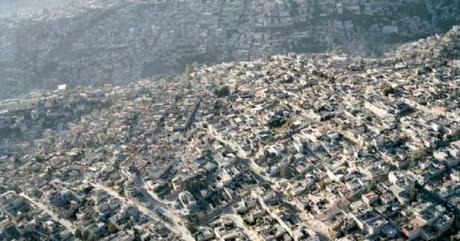
Urban Sprawl in Mexico City
GR: Those 1960’s suggestions that we cluster humans in tall buildings have never been truly encouraged. In many places, urban growth has not been planned. But even where it is, the land is not safe. U. S. residential developers favor the cheapest and quickest method for building houses. They preserve bits of nature only when forced. Thus, construction, the most nature-destructive human activity of all continues without improvement.
University of Washington Conservation Magazine: With more than half the world now living in urban areas, and that percentage growing steadily, that means the concrete and steel will have to stretch out into areas that are currently forest and farm and grass.
A study published in the journal Landscape and Urban Planning simulated the urbanization process in the Piedmont region of North Carolina out to 2032. The question the authors posed was, essentially, what land will suffer in favor of the ever-growing city?
Under a “status quo” scenario where no new land use policies are implemented, developed area would increase by 229 percent from 1996 through 2032. Such a growth in city area would mean a 21 percent loss of farmland and a 14 percent loss of forest. They did find that with other policies that prioritize certain types of land and resources above others, “priority resources” could be spared while still allowing for the growth of urban areas likely to be needed” (read more.)

